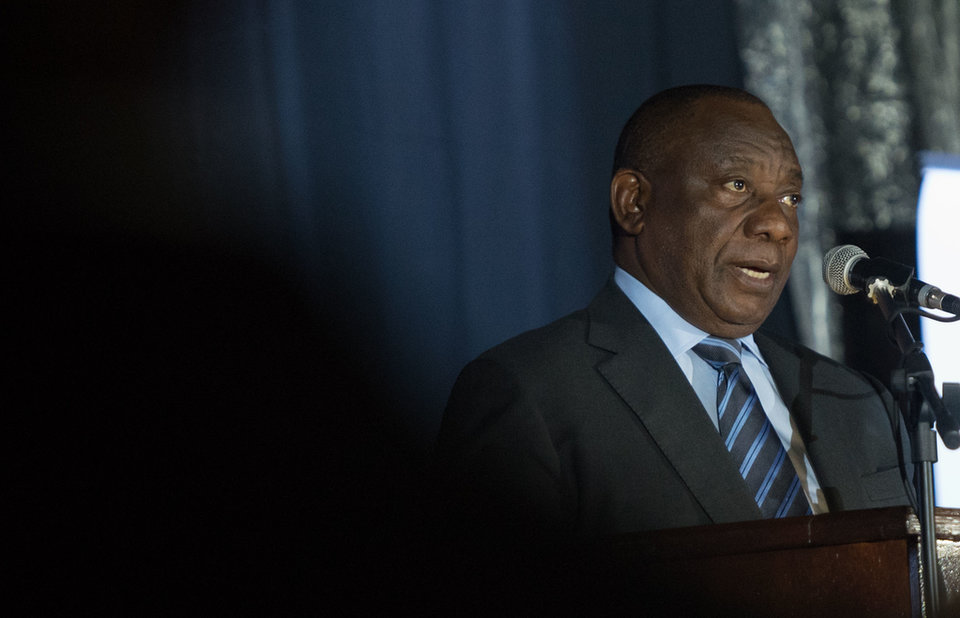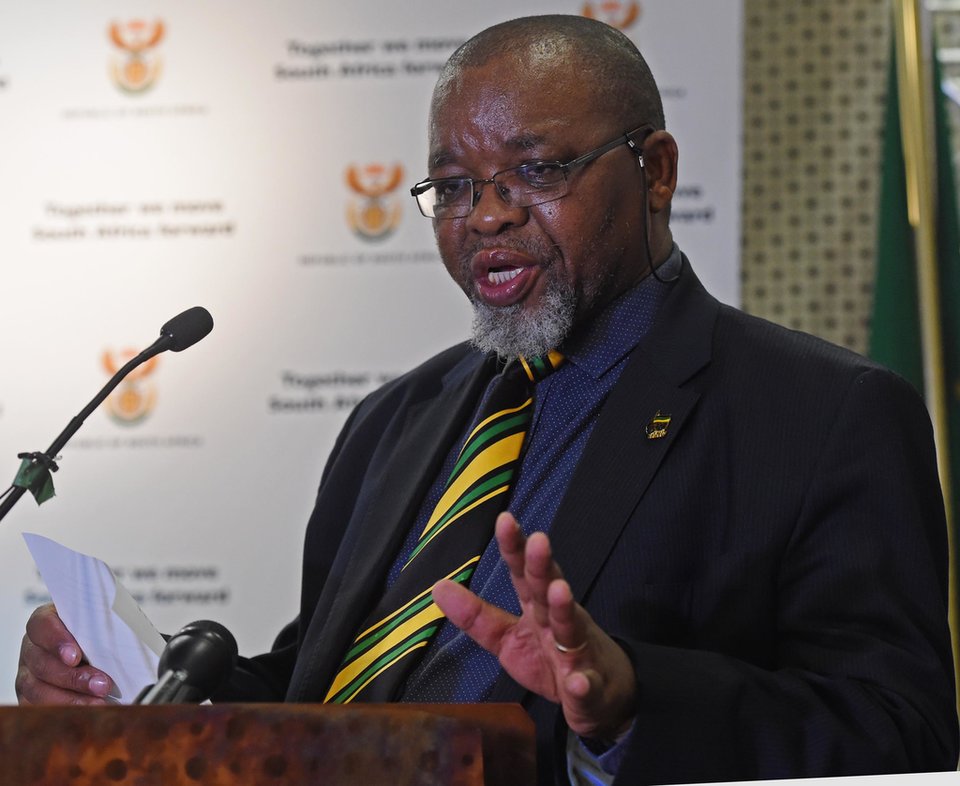High Hopes for South African Mining
Scroll down to read the article
On 15 February, Cyril Ramaphosa became President of South Africa, just hours after the resignation of Jacob Zuma. His election has stoked optimism that there will soon be an end to the stalemate around the introduction of a new Mining Charter, launched in 2017.
The ‘2017 Mining Charter, an Instrument of Change: Giving Practical Expression to Radical Economic Transformation’, presented last June by then Minister of Mineral Resources Mosebenzi Zwane, was met with harsh criticism, prompting the Chamber of Mines to mount a court case in opposition.
Mining is a hugely important industry in South Africa, accounting for 8% of GDP. The resultant policy uncertainty from the disagreements and court case has hit the industry hard, reducing the number of projects and investments, as well as affecting the strength of the South African Rand.
“This year, we will intensify engagements with all stakeholders on the Mining Charter to ensure that it is truly an effective instrument to sustainably transform the face of mining in South Africa,” said Cyril Ramaphosa in his maiden State of the Nation address.
“By working together in a genuine partnership underscored by trust and a shared vision, I am certain we will be able to resolve the current impasse and agree on a charter that both accelerates transformation and grows this vital sector of our economy.”
A breakdown in communication
The 2017 Mining Charter was to be the third revision of the document, which sought to raise black ownership and procurement from 26% to 30% in just a few years, as well as increasing black participation in other areas of the industry. Despite South Africa having a predominantly black population, there are few black people at the top of its industries, with 72% of directors in the top 40 listed company boards being white.
The goal of the 2017 Mining Charter was honourable, but the unworkable timescales it imposed and the concerns it created about supply chains and historical ownership ensured it would be met with resistance.
“Mining Charter Three really upset the apple cart when it came out,” says Hogan Lovells head of mining, Warren Beech. “It dealt with a number of issues, one of the important ones was ownership and historical ownership, and the second really important one was the supply chain.”
“The most important stumbling block at the time was the once-in-power-always-in-power principle,” explains Beech. “In other words, what will happen to the historical transactions that the mines had entered into in which they transferred shareholding to empowerment companies, who had then on-sold those shares? In Mining Charter Three these historical empowerment transactions weren't recognised.”
By failing to include the once-in-power-always-in-power principle, the charter would have made it still harder for mining companies to meet their empowerment quotas, as it voided many previous agreements made with black economic empowerment companies. There was already a background of tension between the mining industry and the Department of Mining when the revised Mining Charter was issued.
A previous breakdown of communications surrounding mining laws was causing issues and it was later revealed that there had been no correspondence between the Department of Mineral Resources and the Chamber of Mines for two months prior to publication.
“There were a number of other aspects going on behind the scenes that put the minister in the firing line with the Chamber of Mines, which represents 95% of the mining companies,” says Beech. “There was a breakdown in the relationship; the publication of Mining Charter Three was just part of the last straw for that relationship between the industry and the minister.”
Following the debacle, Zwane failed to engage with the mining industry to overcome criticisms and instead attacked them, saying when questioned in June: “Anybody who does not want to see black people empowered, anybody who still wants to see black people treated like slaves, raise up their hands and say they are not part of the progressive South Africa.”
This led the Chamber of Mines to launch a court case against the charter, but this is a lengthy process leaving the industry and government in deadlock. However, with the election of Ramaphosa, the chamber has suspended their case.
The charter would have made it still harder for mining companies to meet their empowerment quotas

New President of South Africa Cyril Ramaphosa. Credit: GCIS.
The election of both a business-minded president and a mining minister with a union background is unusual
Who is Cyril Ramaphosa?
President Ramaphosa has been involved in politics since the 1970s when he took part in the anti-apartheid movement, for which he was detained in 1974 and again in 1976. In 1982 he launched the National Union of Mineworkers and helped organise the biggest mining strikes in South Africa’s history. In 1994 he became an MP when the African National Congress (ANC) took power; however, he was overlooked by Nelson Mandela for the deputy position and so moved into business.
Despite business successes that have made him one of the wealthiest men in South Africa, Ramaphosa remained interested in politics and the ANC. In 2012, he became the deputy leader of the party and later deputy to then President Zuma. But as Zuma faced growing accusations of corruption and began pushing for his ex-wife to become the next ANC leader, Ramaphosa distanced himself.
When Zuma eventually resigned, Ramaphosa was sworn in just 16 hours later to cheers and singing within the South African parliament. A popular figure in general, he was referred to as the prodigal son in much of the local commentary. Given his union history, it’s not surprising that the mining industry and the Chamber of Mines are amongst those optimistic about his leadership.
Beech highlights the importance of the new cabinet as well as Ramaphosa himself. “The new Mining Minister Gwede Mantashe is an old, old workhorse in the mining industry, who came up through the union ranks and knows the mining industry backwards,” he explains.
The election of both a business-minded president and a mining minister with a union background is unusual, and suggests a more progressive approach to the industry’s future. “It's a different perspective because normally you technically have someone who has a greater commercial understanding of the mining industry, and Mantashe has more of a trade union background and history,” says Beech.
“But he understands the industry, he understands the consequences of decisions on the industry and he understands what happens when mines don't run, how that impacts jobs, employment and the communities.”
Change is good and certainly the right noises are being made
New Mining Minister Gwede Mantashe briefing the media on plans for addressing the Mining Charter. Credit: GCIS.

Discussion and revision
Since his election in February, Ramaphosa has already made important steps towards an effective revision of the Mining Charter. “What we're expecting to see is a new version of Mining Charter Three which is more balanced, taking into account all the stakeholders’ interest, and again just opening up the possibilities of growth and development in the industry,” says Beech.
Mantashe has already begun talks with the Chamber of Mines and says he recognises the “lack of consultation between the ministry and the partners in the past”. He has reaffirmed Ramaphosa’s pledge that a revision will be completed within three months during a talk with companies and unions in March.
“The chamber confirms that discussions over the weekend were robust,” said the Chamber of Mines in a statement following recent talks. “That is no less than we and all other parties should expect on matters as critical to the industry as this. The industry is appreciative of the real engagement that Minister Mantashe began at the weekend, after an absence of such processes over the last few years.
“We are aligned with the minister’s thinking that transformation, competitiveness and growth are and should be mutually reinforcing goals. These imperatives are not at odds with each other.”
Importantly, on 4 April, the South African court ruled that historical ownership would be recognised in the new Mining Charter. “Essentially, the High Court of South Africa held that the once-empowered-always-empowered principle does apply, and that historical transactions must be recognised,” says Beech.
“However, there was a qualification, namely that the once-empowered-always-empowered principle would only apply in respect of those mining rights which were converted from the old order, to the new order and those rights which were granted without the empowerment provisions being included as a specific term and condition of the right.”
The High Court of Pretoria’s decision to recognise historical ownership has boosted confidence in the South African mining industry. The outcome was welcomed by the Chamber of Mines and mining companies alike, which collectively view it as a step towards a secure and fair system.
While it seems times are changing, longstanding hurdles remain before the country can finally create and implement an effective Mining Charter. As Beech explains, the country has been caught in “a quagmire of low commodity prices, policy uncertainty, regulatory uncertainty, high costs of production”.
“We've been in that quagmire for a long time and to suddenly pull the industry out will take a substantial effort,” he says. “It's a major challenge but I think with a substantial effort government, industry and other stakeholders can overcome it.”
New leadership has undoubtedly increased optimism in the South African mining industry, and if Ramaphosa and his new cabinet are able to please the majority with the new Mining Charter it will bode well for the industry’s relationship with government over the next five years.
“I think that change is good and certainly the right noises are being made,” says Beech. “The right moves are being made and the major stumbling block, in other words the previous minister Zwane, removed. I think just by taking care of that you've already created a far more accessible environment.”
Change is good and certainly the right noises are being made